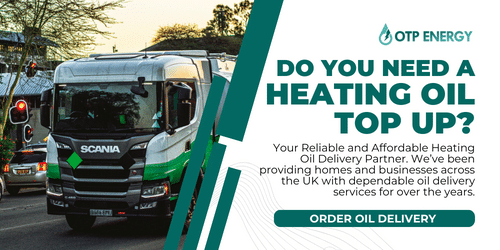What size of Oil Tank do I need for my Home?
Contents
What Size Oil Tank Do I Need for My Home?
Choosing the right oil tank size matters. Too small and you’re forever ordering refills; too large and you tie up cash and space you don’t need. Here’s how to gauge your usage, calculate capacity, compare sizes and prices, and keep any tank running safely and efficiently.
Factors to Consider When Choosing Oil Tank Size
- Property & heating load: Bigger homes, poor insulation, multiple zones, and older boilers all push consumption up.
- Occupancy & hot water demand: More people usually means more hot water and more frequent firing.
- Climate & usage pattern: Colder regions and “always-on” heating strategies need larger buffers.
- Space & siting rules: Clearances, fire separation, and base requirements can cap the physical size you can install. See the UK rules on siting, bunding, and bases in the official guidance on storing oil at a home or business.
Estimating Your Household Oil Consumption
If you’ve got past invoices, total your deliveries over a year. New to oil? A practical starting band for typical UK homes is ~2,000–3,500 L/year, but insulation, boiler efficiency, and usage habits can swing this up or down. Think in terms of how many deliveries you want per year and size the tank to cover that with a winter buffer.
For the safety and compliance side while you estimate, the industry body OFTEC’s consumer guide is a solid reference: home guide to domestic liquid fuel storage.
How to Calculate the Appropriate Oil Tank Size
- Annual use (L): From invoices or a reasoned estimate.
- Refill cadence: Once, twice, or quarterly per year?
- Buffer: Add ~10–20% to cover cold snaps or delivery delays.
- Capacity match: Choose the nearest standard capacity that fits your site and complies with siting rules (bunding, base, clearances).
- Future-proof: If you plan insulation or a boiler upgrade, you may be comfortable sizing slightly smaller; if not, lean larger.
Browse capacities and footprints across our range in the Bunded Oil Tank Collection.
Comparing Different Oil Tank Sizes and Prices
- Capacity vs. convenience: Larger tanks reduce delivery frequency and the risk of peak-winter top-ups.
- Construction: Bunded tanks (inner tank + outer bund) add environmental protection and are often required; single-skin is only allowed in specific low-risk cases.
- Footprint & access: Make sure delivery, inspection, and maintenance clearances are achievable.
- Total cost of ownership: Include base preparation, installation, gauges/alarms, and periodic servicing.
Proper Maintenance of Your Oil Tank Regardless of Size
- Monthly visual checks: Look for weeping joints, cracks, base settlement, and damaged fittings.
- Keep it stable and clear: A level, non-combustible base with vegetation kept back improves longevity and inspection access.
- Service annually: Use an OFTEC-registered technician for tank and line checks, and burner servicing.
- Water and sludge control: Fit a filter, check for water ingress, and consider periodic polishing if contamination is suspected.
For step-by-step upkeep, see our Oil Tank Maintenance Guide.




















Share This: